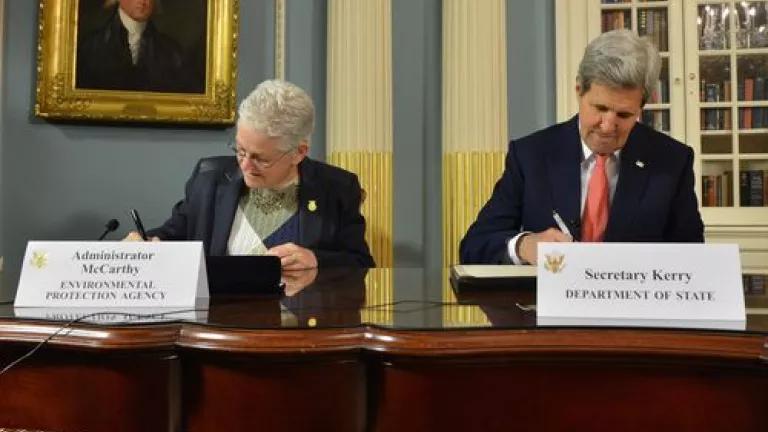
Happy Spring Festival!
Secretary Kerry and EPA Administrator McCarthy Sign Agreement to Launch Innovative International Air Quality Program [State Department photo/ Public Domain]
Yesterday, the State Department and the Environmental Protection Agency announced a new partnership that will monitor air quality at selected U.S. embassies and consulates around the world, building on the successful work of the U.S. embassy in Beijing. The primary purpose of this effort is to reduce the health risks of air pollution by providing clear, accurate, and timely information to U.S. citizens living and working abroad. This program can also serve as a foundation for cooperation between the United States and other countries on controlling pollution as well as combating climate change. EPA's AirNow system of online monitoring will be used in U.S. embassies starting with India, Vietnam, and Mongolia.
The U.S. embassy in Beijing started monitoring PM 2.5 back in 2008, which met with initial skepticism from the Chinese government, but eventually served as a catalyst for major environmental reforms. For example, starting on January 1, 2015, the Chinese government now requires 338 major Chinese cities to provide the public real-time air quality monitoring results for six major air pollutants - PM 10, PM 2.5, sulfur dioxide, nitrogen dioxide, ozone and carbon monoxide - as well as the overall air quality index. China's revised Environmental Protection Law, which also went into effect on January 1 of this year, has an entirely new chapter dedicated to promoting environmental data transparency and disclosure.
In order for China, or any country, to fight air pollution and climate change, accurate real-time data is essential. We need to know not only what is going wrong but also when things are improving. It is great to see this innovative partnership, born of necessity in China, spreading to other parts of the world.
We hope in this Year of the Sheep that all countries will continue building cooperative efforts like this in order to address the formidable global environmental challenges that we all share.
This blog post was coauthored by my colleague Winslow Robertson.
